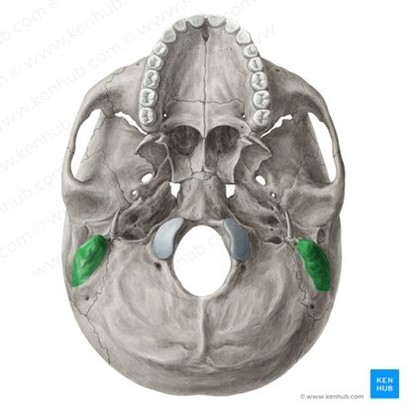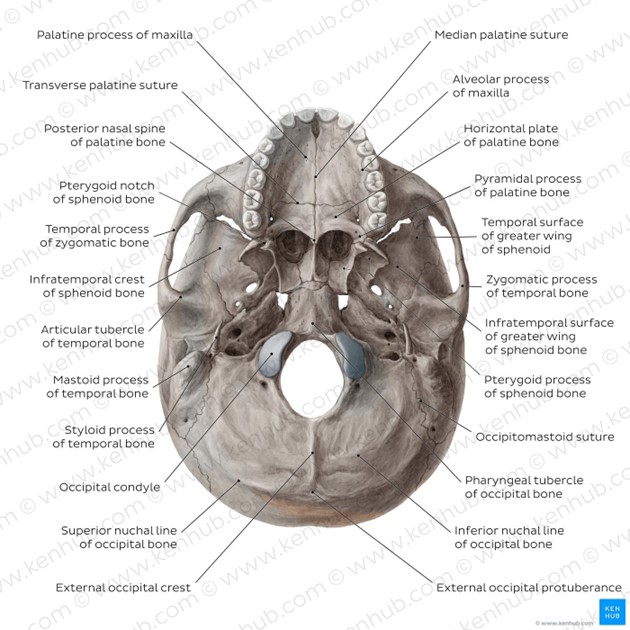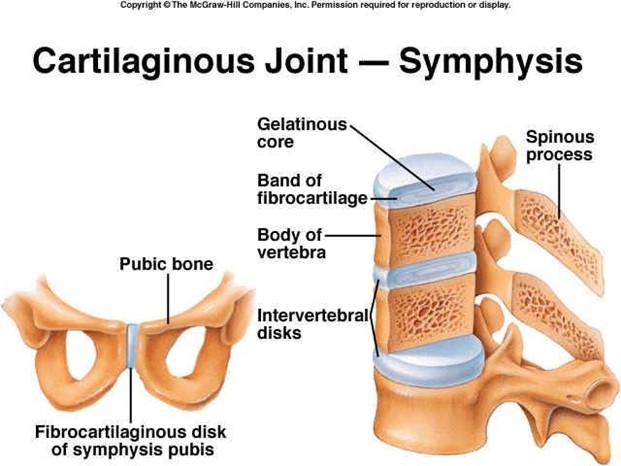Identify the structure in the diagram below

The Correct Answer is ["Mastoid process"]

The mastoid process is a bony prominence located on the temporal bone of the skull, behind the ear.
It serves as an attachment site for several muscles, including the sternocleidomastoid and the splenius capitis.
The mastoid process also contains small air cells that are connected to the middle ear, which play a role in regulating the pressure within the ear.
In addition, the mastoid process is located in close proximity to several important structures, including the facial nerve, the internal jugular vein, and the sigmoid sinus.
Injuries to the mastoid process can occur as a result of trauma, infection, or tumors, and can cause pain, swelling, and other symptoms.
Nursing Test Bank
Naxlex Comprehensive Predictor Exams
Related Questions
Correct Answer is B
Explanation
The joints between the vertebrae are secondary cartilaginous joints (symphyses) that are formed by the intervertebral discs between the vertebral bodies.
A symphysis is a type of joint that has a fibrocartilaginous disc between two bones that allows slight movement.

Choice A is incorrect because synarthrotic joints are immovable joints, such as the sutures of the skull.
Choice C is incorrect because sutures are fibrous joints that are found only in the skull.
Choice D is incorrect because gomphosis is a type of fibrous joint that anchors a tooth to its socket in the jaw.
Correct Answer is ["Mastoid process"]
Explanation

The mastoid process is a bony prominence located on the temporal bone of the skull, behind the ear.
It serves as an attachment site for several muscles, including the sternocleidomastoid and the splenius capitis.
The mastoid process also contains small air cells that are connected to the middle ear, which play a role in regulating the pressure within the ear.
In addition, the mastoid process is located in close proximity to several important structures, including the facial nerve, the internal jugular vein, and the sigmoid sinus.
Injuries to the mastoid process can occur as a result of trauma, infection, or tumors, and can cause pain, swelling, and other symptoms.
Whether you are a student looking to ace your exams or a practicing nurse seeking to enhance your expertise , our nursing education contents will empower you with the confidence and competence to make a difference in the lives of patients and become a respected leader in the healthcare field.
Visit Naxlex, invest in your future and unlock endless possibilities with our unparalleled nursing education contents today
Report Wrong Answer on the Current Question
Do you disagree with the answer? If yes, what is your expected answer? Explain.
Kindly be descriptive with the issue you are facing.
